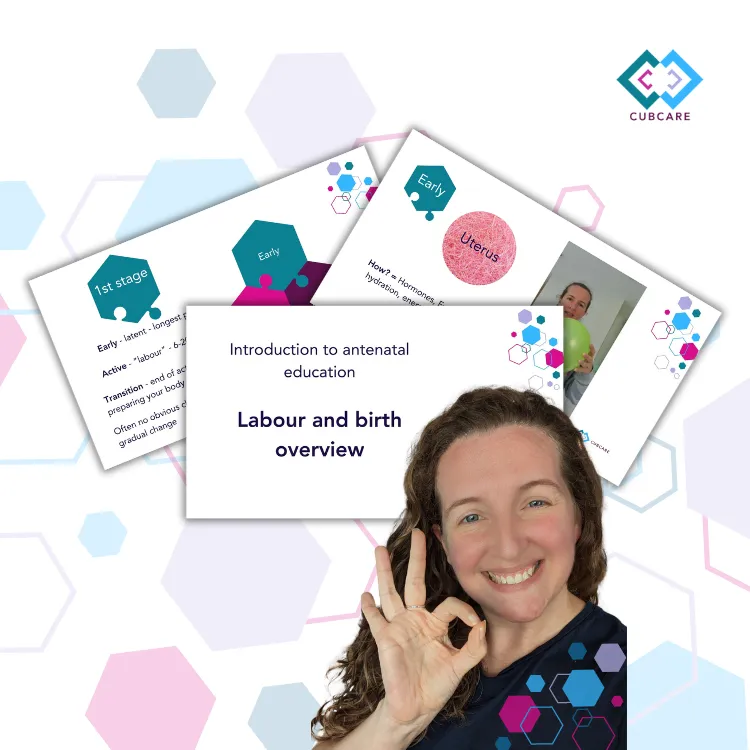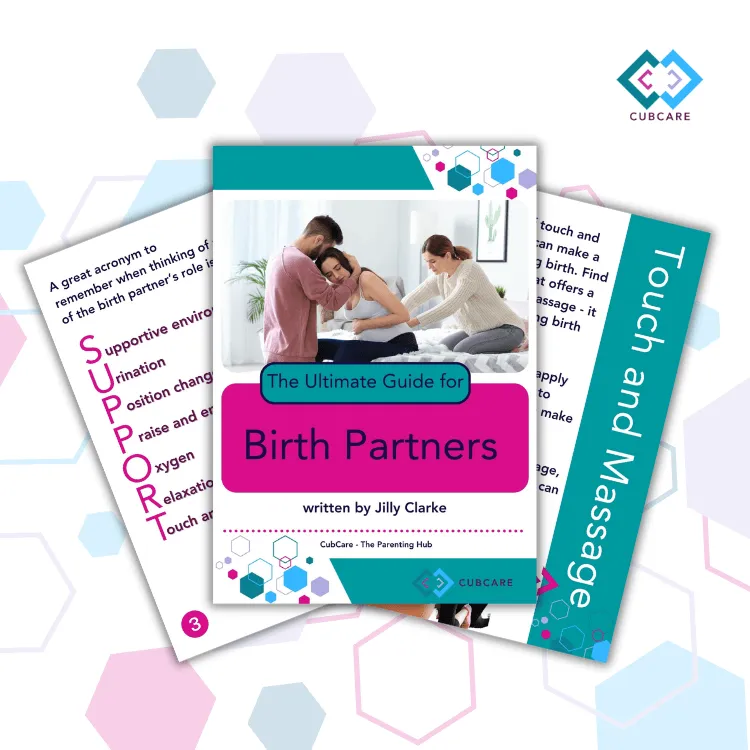CubCare blogs.
From early pregnancy to newborn development.
Advice to help through pregnancy, birth and childhood.
BLOG

Is adrenaline bad for birth?
"Learning how to relax during the pregnancy so that you are ready when the big day comes is vital. A relaxed body does not secrete adrenaline, so the blood flow is not sent away from the uterus to the arms and legs. All the energy, power, and oxygen that your uterus needs is directed straight to it." - Jilly Clarke
What is adrenaline and is it bad for birth?
People often fear birth. When people fear something, they get tense. When you're fearful and tense, your body senses a threat. When the body senses a threat, adrenaline is released into the blood stream to tell your body to fight or flee from the threat.
Adrenaline is the fight or flight hormone. If it is allowed to rise in labour it can block that fabulous labour hormone oxytocin, and endorphins and can make contractions feel so much more difficult. Oxytocin and endorphins are designed to work together, the higher the oxytocin, the stronger the contractions. The stronger the contractions, the higher the endorphins to help manage any sensations. But, if adrenaline is in the body in high doses, this blocks receptors picking up the endorphins, making contractions harder and in extreme situations can also block oxytocin, stopping contractions to keep baby "safe" inside.
When adrenaline rises unnecessarily in birth, oxygen is taken away from the uterus. In extreme circumstances this can result in contractions fading away. Both due to lowered oxygen and oxytocin. But more often it results in more difficult contractions – less oxygen, muscles struggling with less oxygen and less endorphins because of the adrenaline. Added to this, stomach muscles, shoulders and jaws being tense from the stress, and a struggling uterus has a brick wall of muscle tension to contend with too!
Whether from horror stories from friends, woeful depictions of birth in the media, the over medicalisation of birth, or misinformation. Many people are worried about being in agony for hours and are full of fear throughout pregnancy.
This will raise adrenaline levels from the start! People are fearful of birth before they even experience it. Then once contractions start, anxiety rises further, because they are scared and the body is pumped full of more adrenaline.
If you feel anxious, worried or threatened in any way then your body will naturally start to produce adrenaline. This will redirect oxygen in the body, taking blood to the arms and legs in preparation for you to stay and fight the threat, or flee to a safe space.

Can adrenaline be good for birth?
Adrenaline does have an important role to play towards the end of labour as the body prepares to birth baby. The adrenaline type hormones have an impact on both parent and baby, and so are important players in the hormone balance of birth. But, it is important to keep levels to a minimum, in order to keep the balance.
Towards the end of labour, as the body prepares to give birth to baby, adrenaline naturally rises slightly. This promotes "alertness and may promote labor progress by increasing prostaglandin production. The healthy stress (eustress) of labor also elevates the medium-term stress hormone cortisol as much as ten-fold. Cortisol may promote contractions, increase central oxytocin effects on maternal adaptations and attachment, and enhance postpartum mood." (taken from Executive Summary of Hormonal Physiology of Childbearing: Evidence and Implications for Women, Babies, and Maternity Care
In other words, the increase in adrenaline towards the end of labour can help to promote the change in contractions required to go from dilation to "pushing". In classes I always talk about the spike in adrenaline during transition puts the break on the upwards, dilating direction of contractions and pushes the accelerator pedal for the downwards contractions to birth baby.
The increase in adrenaline at this stage also increased alertness of the mother or birthing person; so that they can be sure that baby is safe and is able to look after them after birth.
This adrenaline rise also has an important impact on baby too, once they are born:
Preserving blood flow to heart and brain
Promoting respiratory transitions, including clearing of lung fluid
Mobilizing metabolic fuels for the newborn period
Promoting newborn thermoregulation by burning brown fat
Promoting newborn alertness and energy for breastfeeding initiation

How might maternity practices impact adrenaline release during labour?
Maternity practices can have a significant effect on adrenaline release during labour.
Environmental situations such as bright lighting, frequent monitoring, and a clinical environment can trigger the body’s fight-or-flight response, increasing adrenaline levels.
These practices may make it harder for the body to relax, potentially disrupting the natural progression of labour. In labour, anxiety or situations in which the person in labour does not feel private, safe, and undisturbed may cause a spike in adrenaline, which may slow or stall labour and reduce fetal blood supply by sending blood to the brain and the limbs of the labouring person.
But, sometimes medical interventions can actually help with the production of unhelpful adrenaline.
Epidurals, for instance, can work well to reduce pain and associated tension during labour. This can be especially useful if other situations have arisen and natural relaxation and adrenaline reduces techniques are difficult.
A 2018 Cochrane review cited that "Epidurals may reduce pain during labour more effectively than any other form of pain relief, and may increase maternal satisfaction with pain relief."
How to work with, and/or reduce adrenaline in labour?
Managing adrenaline during labour can make a big difference in how smoothly your birthing process unfolds. By preparing in advance and using techniques to promote relaxation, you can reduce the fight-or-flight response and encourage the flow of oxytocin and endorphins, which are essential for a positive labour experience.
Here are some practical tips to help you work with or reduce adrenaline during labour:
Practice relaxation techniques early: Engage in breathing exercises, meditation, and visualizations during pregnancy to build a toolkit for labour.
Create a calming environment: Dim lighting, soft music, and a sense of privacy signal to your body that it’s in a safe space.
Surround yourself with support: Trusted individuals, such as a partner, doula, or midwife, can provide reassurance and reduce anxiety.
Use movement: Gentle movement, such as walking, swaying, or bouncing on a birthing ball, can help release physical tension and reduce adrenaline.
Focus on positive affirmations: Reassure yourself with affirmations and a mindset of trust in your body’s ability to birth.
Recognize the usefulness of adrenaline at the end: In the final stages of labour, adrenaline can provide a needed burst of energy for pushing and staying alert post-birth.
By incorporating these strategies, you can work with your body to minimize adrenaline’s impact, allowing your labour to progress naturally and comfortably.
Learning how to relax during the pregnancy so that you are ready when the big day comes is vital. A relaxed body does not secrete adrenaline, so the blood flow is not sent away from the body to the arms and legs. All the energy, power, and oxygen that your uterus needs is directed straight to it. There is no restrictions from tense stomach muscles, jaws, shoulders or pelvic floors. Making contractions more comfortable and more efficient!
Remember, our bodies are SO capable. With the trust, the knowledge and the education you CAN have an amazing birth experience.
That's why we have our Antenatal Course (both in person and online), Refresher Antenatal Course (both in person and online), and our Birth Partner course so that everybody can get knowledgeable and confident for birth.
Refresher Antenatal Course in person
Refresher Antenatal Course online
Birth Partner course (included in our Antenatal course)
Antenatal Course in person
Antenatal Course online
Download our Freebies

Labour and Birth
Watch our introduction to antenatal education webinar, our labour and birth overview - to start your antenatal education journey. Understanding the process, and what you can do to influence it.

Pregnancy Planner
Free Pregnancy Planner to help you prepare for a little one. Prepare your body, your mind, your finances and your home. Get organised, feel good and prepare for an active, positive birth.

Birth Partner Guide
Your ultimate guide to being the best birth partner during pregnancy, birth and recovery. Learn what you need to do, and what you need to learn to be the best birth partner possible.

Expecting Again Guide
Your ultimate guide to preparing for another birth and an extra baby. Our top tips for navigating pregnancy and birth, and helping your older ones to transition into their new role as a big sibling.
Based in Welwyn Hatfield, offering local pregnancy support and doula services across Hertfordshire: St Albans, Hatfield, Welwyn Garden City, Potters Bar, Stevenage, Harpenden, Hitchin, Barnet, Mill Hill and surrounding areas.
Online antenatal and postnatal education available UK-wide.
© Copyright 2025 CubCare The Parenting Hub - Privacy Policy - Terms & Conditions

